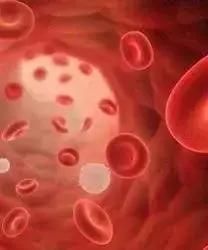Article
Liso-cel Approaches EU Approval for Relapsed/Refractory DLBCL, PMBCL, and Follicular Lymphoma Grade 3B
Author(s):
The European Medicines Agency’s Committee for Medicinal Products for Human Use has recommended the approval of lisocabtagene maraleucel for the treatment of adult patients with relapsed or refractory diffuse large B-cell lymphoma, primary mediastinal large B-cell lymphoma, and follicular lymphoma grade 3B following 2 or more lines of systemic therapy.

The European Medicines Agency’s Committee for Medicinal Products for Human Use (CHMP) has recommended the approval of lisocabtagene maraleucel (Breyanzi; liso-cel) for the treatment of adult patients with relapsed or refractory diffuse large B-cell lymphoma (DLBCL), primary mediastinal large B-cell lymphoma (PMBCL), and follicular lymphoma grade 3B (FL3B) following 2 or more lines of systemic therapy.1
The positive opinion is based on findings from the phase 1 TRANSCEND NHL 001 trial (NCT02631044), and additional data from the phase 2 TRANSCEND WORLD trial (NCT03484702).
“This positive CHMP opinion is an important milestone that recognizes [liso-cel] as a differentiated cell therapy with the potential to address unmet needs for patients in the European Union with aggressive lymphomas who have limited treatment options,” Anne Kerber, senior vice president of Cellular Therapy Development at Bristol Myers Squibb, stated in a press release. “We look forward to the European Commission’s decision as we continue to accelerate our research in cell therapy to develop new treatment options for patients living with difficult-to-treat blood cancers.”
The open-label, multicenter, phase 1 TRANSCEND NHL 001 trial enrolled patients with relapsed/refractory large B-cell lymphoma, including DLBCL, high-grade B-cell lymphoma, PMBCL, and FL3B, who were at least 18 years of age, had an ECOG performance status ranging from 0 to 2, a creatinine clearance level of 30 mL/min/1.73 m2, and a left ventricular ejection fraction of at least 40%.
Patients who previously underwent hematopoietic stem cell transplantation were permitted, as well as those with secondary central nervous system (CNS) lymphoma.
After screening, patients underwent leukapheresis. Bridging therapy was permitted during the manufacturing of the CAR T-cell product. After PET-positive disease was reconfirmed, patients received a lymphodepletion regimen comprised of fludarabine at 30 mg/m2 and cytarabine at a dose of 300 mg/m2 for 3 days. Patients then received liso-cel at 1 of the following 3 dose levels 2 to 7 days after lymphodepletion: 50 x 106 CAR-positive T cells (dose level 1), 100 x 106 CAR-positive T cells (dose level 2), and 150 x 106 CAR-positive T cells (dose level 3).
The primary end points of the trial are adverse effects (AEs) and objective response rate (ORR) per independent review committee (IRC). Key secondary end points include complete response (CR) rate by IRC, duration of response (DOR), progression-free survival (PFS), overall survival (OS), and pharmacokinetics.
Data from a prior analysis of the trial showed that the CAR T-cell therapy elicited an ORR of 73%, with a CR rate of 53%. Two-year follow-up findings from the trial were presented during the 2021 ASH Annual Meeting. The overall median follow-up was 19.9 months (range, 0.2-45.2).
The median age among the 270 patients who received treatment with liso-cel was 63 years (range, 18-86), with 41% of patients 65 years of age or older and 10% who were 75 years of age or older. Moreover, 99% of patients had an ECOG performance status of 0, 3% had secondary CNS lymphoma, 67% were refractory to chemotherapy, and 44% had never achieved a CR. The median number of prior lines of systemic therapy received was 3 (range, 1-8), 33% received prior autologous transplant, 3% had prior allogeneic transplant, and 59% received bridging therapy.
Data showed that the median DOR was 23.1 months (95% CI, 8.6–not reached), and the probability of continued response at 2 years was 49.5% (95% CI, 41.4%-57.0%). The median PFS per IRC was 6.8 months (95% CI, 3.3-12.7), and the probability of PFS at 2 years was 40.6% (95% CI, 34.0%-47.2%). The median OS was 27.3 months (95% CI, 16.2-45.6), and the probability of OS at 2 years was 50.5% (95% CI, 44.1%-56.5%).
Few toxicities were reported after the 90-day TE reporting period. Within 90 days of liso-cel infusion, 99% of patients experienced any-grade toxicities and 79% experienced grade 3 or higher toxicities. Seventy-four percent of patients experienced any-grade AEs associated with liso-cel, and 35% experienced liso-cel–related AEs that were grade 3 or higher.
The most common grade 3 or higher toxicities included neutropenia (60%), anemia (37%), thrombocytopenia (27%), decreased appetite (3%), hypotension (3%), cytokine release syndrome (2%), fatigue (1%), nausea (1%), headache (1%), diarrhea (< 1%), dizziness (< 1%), and vomiting (< 1%).
The single-arm, multicohort, multicenter TRANSCEND WORLD trial, which was conducted in Europe and Japan, examined the safety and efficacy of liso-cel in patients with aggressive B-cell non-Hodgkin lymphoma. The primary outcome measure for the trial was ORR, and important secondary outcome measures included safety, CR rate, event-free survival, PFS, OS, DOR, pharmacokinetics, and health-related quality of life.
The European Commission is expected to reach a final decision within 67 days of receipt of the CHMP opinion.
References
- Bristol Myers Squibb receives positive CHMP opinion for CAR T cell therapy Breyanzi (lisocabtagene maraleucel) for relapsed or refractory DLBCL, PMBCL, and FL3B. News release. Bristol Myers Squibb; January 28, 2022. Accessed January 28, 2022. https://bit.ly/3ANRLOz
- Abramson JS, Palomba ML, Gordon LI, et al. Two-year follow-up of Transcend NHL 001, a multicenter phase 1 study of lisocabtagene maraleucel (liso-cel) in relapsed or refractory (R/R) large B-cell lymphomas (LBCL). Blood. 2021;138(suppl 1):2840. doi:10.1182/blood-2021-148948









